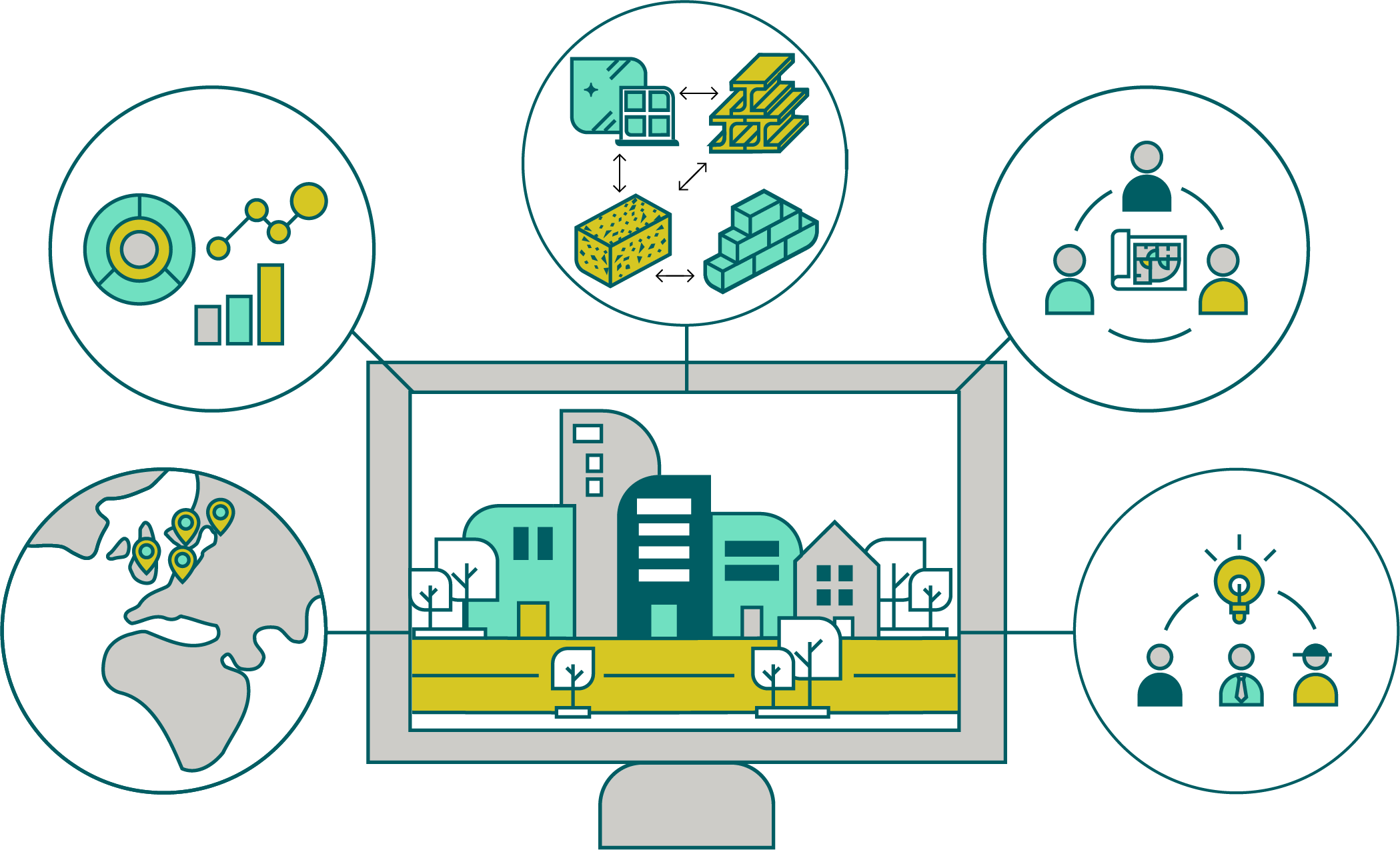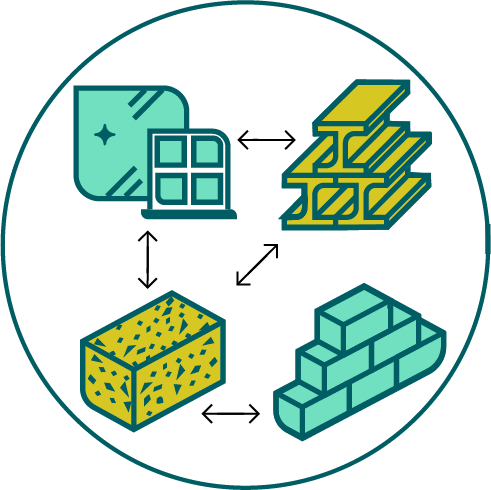About us
The Material Reuse Portal is one of five platforms built for the CIRCuIT project. It brings together construction materials from multiple marketplaces to create a single place where reusable materials can be found.


Better choices for the built environment
In London, the built environment consumes 400 million tonnes of materials every year, producing 54% of all waste in the capital. Reusing materials not only reduces the waste created in the city, but also has benefits in terms of carbon emissions. For example, it is estimated that newly manufactured bricks emit 95 times more CO2 in their production, compared to reusing bricks that already exist. It is estimated that the construction sector is responsible for about 10% London's consumption-based carbon emissions.

All in one place
The Material Reuse Portal is designed to bring together data on available materials from multiple sources. We have integrated with two marketplaces so far and provide a simple way for other providers to be listed on the site. We plan to grow the number of marketplaces and increase the amount of choice for those who want to reuse materials and components in their projects.

Better data
In order to create a 'circular economy' it is important that materials are better understood and that data is collected in a standardised way. The Material Reuse Portal allows users to save data about the listings they are interested in which can later be used as a digital 'passport' for the item.
Over time we will seek to build up more data on the demand for different types of products in the built environment that can help demolition contractors understand the items that could cost-effectively be dismantled for reuse.
Cultivating Collaboration, Constructing Integration
Our commitment lies in cultivating a sustainable future through fostering collaboration and constructing an ecosystem that evolves seamlessly through integration.
Our platform has been meticulously crafted with the UK in mind, ensuring it meets the unique needs of this region, while also being designed for scalability and adaptability worldwide. Powered by open-source software, our solution remains agile and accessible, ready to evolve alongside the changing landscape of global sustainability initiatives.
Built upon open-source software, our platform harnesses collaborative innovation to empower users to customise and extend its capabilities to suit their unique needs. Together, we drive sustainable change through principles of openness, transparency, and community-driven development.
In collaboration with Dsposal, our trusted Technology Partners, who offers guidance and support to those seeking to replicate our success in different territories. Drawing upon their expertise, we ensure that our impact transcends geographical boundaries, multiplying our efforts and influence on a global scale. Join us on this journey to forge a path towards lasting change, united under the banner of collaboration and innovation.
Partner with Dsposal
Connect with our trusted Technology Partner, Dsposal, for expert guidance and support in replicating our success in different territories. Visit their website to learn more about their services and how they can assist you in your sustainability initiatives.
Learn MoreSite Architecture & Replication Guide
Explore our comprehensive document outlining the architecture of our platform as built, along with step-by-step guidance on how it can be replicated in different territories. Dive into the details of our solution and learn how to adapt it to suit your sustainability initiatives.
Learn MoreMaterial Reuse Portal Integration Guide
Discover our integration guide tailored for partners interested in seamlessly integrating with our material reuse portal. This document provides detailed instructions on how to leverage our platform's capabilities to enhance your own sustainability initiatives.
Learn MoreCIRCuIT Final Report
Explore the dedicated chapter on the Material Reuse Portal within the CIRCuIT Final Report. This comprehensive document provides in-depth insights into the development, implementation, and impact of our portal in advancing circular economy principles. Dive into the findings and recommendations to gain valuable knowledge for your sustainability endeavors.
Learn More